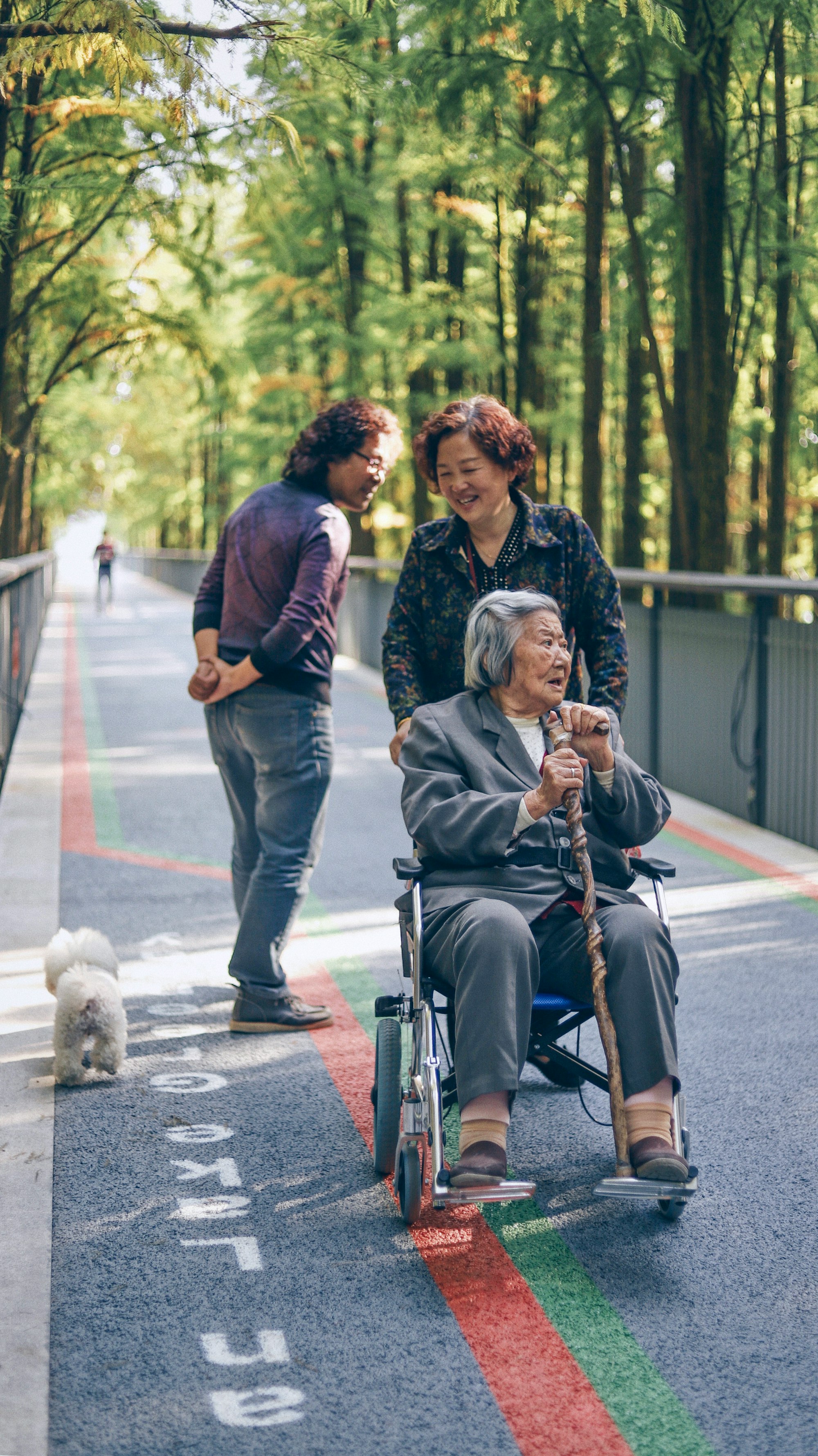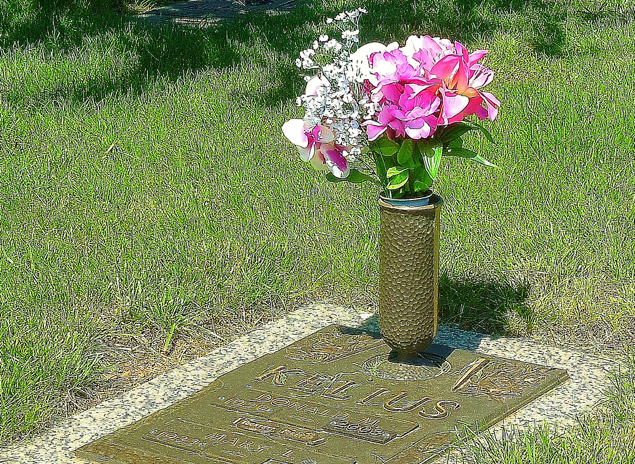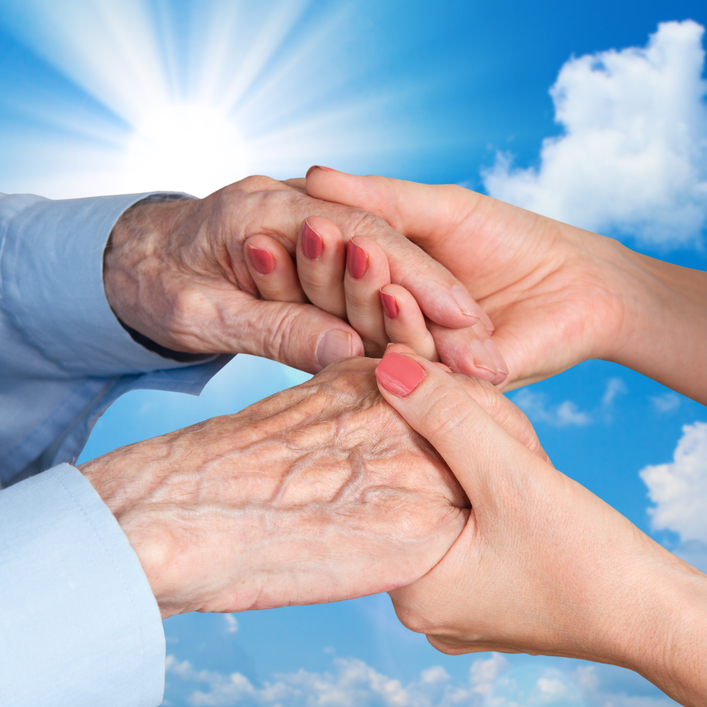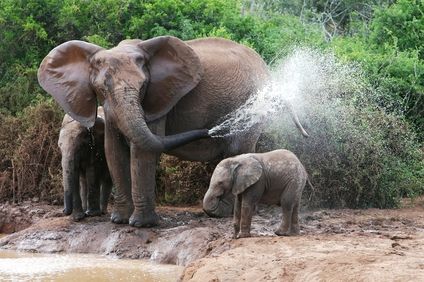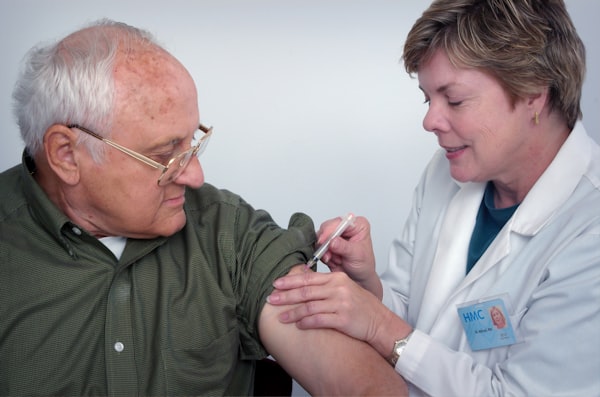Cultural Influences on end of life care affects end of life planning with Pat Deegan RN - Episode 18

Religion, culture, ethnicity, social circumstances, geography and even gender plays a role in end of life planning. Communicating your beliefs to health care providers and family members helps assure that your wishes are respected.
Diane Carbo: Hi, this is Diane carbo with caregiver relief. And today I have Pat Deegan, our end of life specialist and podcast contributor. Today we’re going to talk about end of life planning and understanding death rituals around the world that are here in the United States.
Diane Carbo: One of the things we are in America is one of the most diverse countries in the world. We have so many different cultures. We’re a melting pot. , when these cultures come together, they create a new culture and we do have American culture. in many of those customs and traditions and religions, Have been adopted into our American culture, including funeral traditions and end of life planning.
Diane Carbo: Today we’re going to talk about that, but pat, there are many different religions cultures that. Affect our end of life planning factors, such as our ethnic background, where we live our values, even our social circumstances and our religion and spirituality, and even gender now plays a role.
Diane Carbo: So let’s discuss. The probable influences that end of life and whether or not we’re going to use resuscitation measures medications.
Pat Deegan RN: That’s a very good introduction to what I’m going to talk about today. It really was. I think as caregivers, we have to be mindful of what these religious beliefs are or traditions and stuff when we’re taking care of a patient. I think it’s very comforting for the patient, if the caregiver dosas, especially towards the end of life because they know what the caregiver knows, how the patient feels about certain religious beliefs.
Pat Deegan RN: And that’s very important. And I’ll go into that in a minute. And funny, you should say that, but about the men tend to claim they have no affiliation whatsoever towards a religion, whereas women tend to belong to something and will easily admit it. And geographically, it was interesting because the south generally is evangelistic, let’s say the Northeast generally is calf.
Pat Deegan RN: I love this one. The west is atheist or agnostic.
Pat Deegan RN: The black Americans tend to affiliate with some kind of an evangelistic group. I think I probably got more than 16 religions that I broke down as to some of their idiosyncrasies. Shall we say or differences? Let’s say Jehovah witness. They won’t eat raw meat, unless all the blood has been drained out of it.
Pat Deegan RN: Now I did not know that they, of course they refused blood transfusions. Autopsy. No, unless it’s, indicated by law to either clear somebody or to find the reason for someone’s death.
Pat Deegan RN: Judaism is the oldest religion in the world. They have two kinds. Those are the Orthodox and the reform. The reform tends to be a little more flexible with some of their beliefs. They they will go with organ donations. And we’re going to talk about that later autopsies. No, unless it’s made by law.
Pat Deegan RN: Okay. embalming, no cremation. The reformed Jews will do what the Orthodox will lap. Now this isn’t going to be an awful lot to cover Hinduism. They’ll go for organ donation and cremation. They will not do autopsy or embalming Buddhism autopsy cremation. Yes, Oregon’s no. No. Christianity, I’m going to lump Christianity, Catholicism, Protestant, and probably Methodists because if they all they blend in a lot and most of them will agree to organ donation.
Pat Deegan RN: Embalming autopsy. A lot of them frown on it, but we’ll do it. If it’s legally indicated and cremation. Now, what I didn’t know until I looked this up Catholicism does go with it and that’s changed over the years. Probably 200 years ago. They didn’t, but they do now, but the ashes can’t be scattered.
Pat Deegan RN: They have to be there. Or kept in somebody’s home. That’s surprised me as, what my wetland done with. Okay.
Pat Deegan RN: And the Baptist go along with that. They would prefer to have people buried, although they do go with the cremation, but would prefer burial. Now it gets very interesting when we talk about the. Organ donation maybe. And that was a big maybe, I guess it must depend on certain things autopsy.
Pat Deegan RN: No, unless the law demands it embalming, no cremation. No. So they don’t believe in anything, cIC is an S I K H I M it’s in India. Mostly organ donation. Yes. Autopsies. Yes. And cremation in bombing. No, absolutely not. And they have a little idiosyncrasy. They will not eat meat or fish. the Mormons. Organ donation. Yes. Autopsies and bombing. Yes. Cremation. No, they also, this would be good for the caregivers. No coffee, no tea, no alcohol, no sugar and very little meat. No. I didn’t realize they had that many restrictions.
Pat Deegan RN: Now here’s the thing interesting. When the Baha religion organ donation. Yes, . Autopsy yes. And bombing. No. Now I think when we think of dietary restrictions, most of us know that Jewish people have to have everything and it’s kosher in India, the cow is sacred. We all know that, I think.
Pat Deegan RN: Oh, alcohol of course is forbidden by some religions altogether. Sorry, but that is it in a wrap up. I tried to make it as easy as I could, but it’s very interesting how different and yet how similar some of them are.
Diane Carbo: Yes. And it’s definitely going to make a difference in people with making end of life decisions. The view on death of Christianity is they believe there’s a separation of the eternal. Spirit from the physical body and brain death is supported as death by most Christian denominations. So that means that a DNR or a D do not resuscitate or do not intubate it’s permitted if interventions would be few times or burdensome to the family. Those are things that we need to look at. And with Judaism the view on death is a natural process that should be allowed to occur. And they don’t believe hastening death is permitted at all. So cardiac death is generally accepted as death. Brain death is not accepted as death by some Jews, although many including the Orthodox rabbis don’t consider brain death as acceptable. Again, it would be the DNR and DNI is committed. If interventions will delay the dying process and the recovery. Unlikely.
Pat Deegan RN: That’s where the caregivers come in and that’s when they really have to know certain things, like
Pat Deegan RN: what they can and cannot. Do. You know what I mean? That’s so important. If they’ve been found to be brain dead, if they were a body donation, if they have that kind of a death, that the body would not be accepted.
Diane Carbo: Yes and Islam, they believe their view on death is a transition from one state of existence to the next. So brain death is generally accepted. Although some only applied brain death criteria, three physicians agreed brain death has occurred and it’s irreversible DNR and DNI. They do not resuscitate and do not intubate is permitted in certain situations. So those are the important things the caregiver would need to know with the Islam, faith. Now, Buddhism, their view on death is they believe reincarnation occurs until one attains Nirvana. So death is distinguished from life by an absence of Vitality heat and consciousness, and some agree that brain death meets the criteria for death while others do not.
Diane Carbo: So again, it has to be something that is discussed by families and the caregivers on what they feel that. Death would be for them. The DNR and DNI is permitted. If the interventions will delay the inevitable or interfere with a natural death,
Pat Deegan RN: every religion looks at things differently. That’s really amazing and it depends on what kind of depth it is. And how they looked at it. Some of these will allow low on autopsy only if it’s a thing by the law, otherwise they wouldn’t go for it.
Diane Carbo: Yeah. And Hinduism, they believe reincarnation occurs until one is free from the death rebirth cycle and they reach a level of enlightenment. I think it’s called bulk Shaw and Mo K S H a M is attained. So generally. Brain death is accepted as death. When it comes to Hindu is on the DNR and DNI permitted only interventions will delay the inevitable or interfere with natural deaths.
Pat Deegan RN: That’s right. That’s very well put.
Diane Carbo: I think that death needs to be viewed as a natural experience and therefore artificial prolonging life is not always favored in, in a lot of different religions. Hindus, for example, may desire a clear mind and may want to avoid any kind of medications. Make them calm and peaceful. So it’s important to know family support is important while dying. Absolutely. An individual that surrenders peacefully and willingly is considered a good death.
Diane Carbo: May not always be facilitated. So I’d like to talk about the different rituals that people go through in the different religions. At the time of desks. Christianity, people pray. They receive their sacraments with the Catholics. There’s the receiving the last rights, yeah. And burial or cremation is basically acceptable in Christianity. In Judaism, there’s a lot of praying and Psalms, but there’s also a risk tool washing and dressing, and they’re placed in shrouds, which is it’s a beautiful process.
Pat Deegan RN: Yes. They have certain cloth that they put over the people that are made by the community
Diane Carbo: That’s a beautiful ritual Judaism. The burial must be within 24 hours when possible. And cremation again, if it’s generally not acceptable, but reform Jews may allow that
Pat Deegan RN: . There was no the Catholics and the Irish always celebrate life, Judaism do it so much differently. There’s there’s no singing, there’s no happiness or anything. Very quiet and peaceful and people pray to themselves
Diane Carbo: they cover all the mirrors and pictures in the household. They also have a ritual where they drive the body past the house. There’s a funeral procession passed the house. It’s just a very lovely process that I’ve seen . Processions, they drive past the house one last time. I’ve seen that in New York several times. Now with Islam, they pray from the Koran. They actually believe that the body needs to be place towards Mecca, which is Northeast in the U S and they do a ritual, washing and draping for the family. And again it’s a burial within 24 hours when possible. .
Diane Carbo: In Buddhism, there are no formalities or ritual required, but they do prefer that the body be undisturbed for three to eight hours after death and then handled with dignity and care and the body is generally wrapped in a sheet without any emblems or anything. And Buddhist prefer cremation.
Pat Deegan RN: And when you said the body is unadorned or anything, right? A lot of the religions don’t want let’s say symbols of wealth or power . They were just about who they weren’t anybody important, just, another human being from God, but not to have any fancy stuff put on these things to have people indicate that, oh, they must’ve been somebody.
Diane Carbo: Yeah. That’s interesting. Yes. And Hindus prefer to die at home with family support. There’s a lot of prayers, hymns and chanting. They placed the head facing south and they prefer cremation. Ideally within 24 hours after death has occurred.
Diane Carbo: You know what? I want to talk about traditional American funerals because we’ve included some sort of religious ritual. Followed by a procession to the burial grounds. And we have small ceremony at the grave site. Again, it depends on the culture, but at most American funerals the family sends out a death announcement and it’s an obituary and these are bits are normally to pass on information about the deceased and at the time and day of the funeral. There’s usually a church service where the deceased is eulogized by family and friends. And this is where a family member or person or friend, stands up and says a few things about the deceased and how they affected their life.
Diane Carbo: It’s usually a procession that takes form of a caravan of private cars that follow the hearse. There is always a small ritual that takes place at a grave site. The deceased is given a blessing by a member of the clergy and the friends and family are allowed to say goodbye. In some, the American tradition is of picking up a handful of soil and tossing, into the coffin is one way to say goodbye. There are some that choose to use flowers instead, and they put them in the coffin and then the family gathers at a home or a restaurant. With some people that want to give their last regrets or sympathy to the family members. It’s a time to exchange stories about things before they go on their way. Most cultures in the U S have adopted this traditional American funeral ritual. But again, everything is unique to their
Diane Carbo: Individual culture. I know for me I’m a girl had some Pittsburgh and I’m Irish and I’ll never forget how different my family. Approached death. There were so many of us. I remember Joey Basotho was a young man while we were kids. We were in first and second grade. Joey had leukemia and he died. And I remember it was my first experience. With a dead body. He was my age and his family had him what we call laid out in the home now this had to be in the early. Sixties. So the coffin was at the home for three days and the family had visitors come and stay all the time. He had somebody stay 24 hours, but that was my first experience with. Death of someone and it was in the home. And it was a very lovely experience. I remember feeling sad that he died. Of course I was only seven, but then the next year my grandmother died now I’m from a big Irish family.
Diane Carbo: In Pittsburgh These periods of morning, it’s three days of visitations in the funeral home. And you have different times, so you may be there at lunch and then at dinner ., you were there as the grieving family to allow others to come in and say goodbye. So it was very challenging for me as a child to see my grandmother. We were a big Irish family, so we all had so many grandkids . There was kids running around and talking and laughing and family members. So it’s not the solemn that people think that it should be, at the end of life.
Diane Carbo: My mom died when I was 18 . She had lung cancer and died from the complications of the treatment for lung cancer. It was sudden it was at the holidays. It was around Christmas and it was very challenging. I have to tell you my my first husband, we weren’t married then he took such a fence. To how my family behaved. . He was from Indiana. He had never been exposed to anybody that had died and didn’t have close family. Again, it’s the difference in the cultures and where you’re from.
Diane Carbo: Oh, I’m Catholic, asked her the visitation at the funeral home people come to the house and there is so much food and everybody sits and drinks and talk and share a story. So the Irish family. We grieve, but we also celebrate,. I think that people don’t understand that a celebration.
Diane Carbo: What the heck? What’s that about? How can you be happy at a time of grief? But we had three days of that before we buried my mom. . , 10 years ago, my son Jeff died. He completed suicide and he had the young came out from everywhere.
Diane Carbo: One of the things that we did because he had a military Background as well as did my father one of the things that they do is the veterans associations come in and they play music and they present the family with a flag there’s special services that are done at the funeral home at the time to honor my son and my father’s service when when they were in the military.
Diane Carbo: First of all. It’s heart-wrenching
Pat Deegan RN: oh my gosh.
Diane Carbo: It is also very touching to go through that process and know that they’ve been acknowledged and honored for the service that they gave to our country. I thought that was beautiful. My experience with my son just brought me to my knees
Diane Carbo: my son jeff was single. They brought a flag to me. And you know what that, to this day, I just, it just makes me cry. The thought that, they were honoring him, but it’s very hard because they also do the 21 gun salute.
Diane Carbo: That was very hard for me to hear those guns going out. . It was a beautiful service and they come out in their full gear, the military, and they do a lovely presentation to the family member. And I think that’s, it’s very nice. I know for me
Diane Carbo: It was hard. . I love the bagpipes and we had amazing grace and Danny boy played . One of the things I made sure that. Did at Jeff’s service that was important. For, I think the youth, because he was only 35 when he died . I told them that, oh, this is about a celebration of Jeff’s life. Let’s miss him and grieve him, but let’s celebrate what he did and who he was. And I think that’s really important. I think that there were moving. Those types of practices, personalizing them and making them, I totally, as it says, it sounds happy and not sad.
Pat Deegan RN: When you were talking about Christianity, they have the horse and they, all these things, I couldn’t help, but think the extreme opposite of the people in Louisiana, where they have a parade and there all this noise and happiness and all this other stuff with certain cultures.
Diane Carbo: Oh. If you’ve never been to a new Orleans funeral. You haven’t been to a funeral. It is an amazing experience, the joy and the fundamental love of life comes across. And it’s a way that they help usher a person into the next life. It’s a beautiful experience and it’s a very important experience for many.
Diane Carbo: One of the things pat . I’ve seen it so many times where as soon as the person passes, the first thing somebody wants to do is open a window. Yeah. I’ve heard that yet to let the spirit free, and yes. To free the spirit. Yeah.
Diane Carbo: And it’s so interesting to me, how that’s the first thing that people want to do is they want to open that window and they want to free that spirit. It’s just a comforting. Action that we take in a moment of sadness and grief to help us get to the next step. Yeah.
Pat Deegan RN: People don’t think of these things as a sort of a ritual or something,. It makes the remainder people feel good about it. That they’ve done something for the soul, if you will.
Diane Carbo: Dying is a unique experience and it’s very profoundly influenced by culture . We only do it once. And we each deal with the dying process in a different way. Our past losses, our level of education or experience or life experience, our spiritual and religious beliefs and personal philosophies all affect our feelings, our reactions and expressions about death and dying.
Diane Carbo: So it’s important that we all embrace our cultural background on death and dying. Because it can lead to a meaningful one. A peaceful. Yeah,
Pat Deegan RN: absolutely. Absolutely. I was going to touch very briefly on body donation. We talk about organ donation, a lot, but a body donation is. An extreme wish. It’s not for everybody that’s for sure. And the people that make this conscious decision. Honestly it’s very important to them. The survivors comply with their wishes that, they really feel very deeply about this and it can be very difficult, especially for the family. When, for some reason , the body doesn’t qualify for body donation, they’re grieving.
Pat Deegan RN: The loss of their child or son or whatever. And then when it doesn’t happen, they have to agree with that. They can’t follow their instructions. And believe me, these people feel very strongly about this. The donor has to have a card with him wherever he goes so that they know
Pat Deegan RN: There’s very strict complications that you alluded to a couple of them. Like they can’t have an autopsy. Because the hospitals want the body, preserved just the way it was. The person has to be free of say aids, hepatitis B, or C or sepsis if the patient died of any of those things, she wouldn’t qualify.
Pat Deegan RN: And I don’t think a lot of people really think about those things. They have to be 21 years old. There’s a maximum height now. That was surprising to me. They can’t be over 62. Yeah, I know. Yeah. That’s surprised me a lot. And less than 200 pounds,
Pat Deegan RN: we wouldn’t have the advances in. Medical field. If there weren’t people that were selfless enough to donate their bodies. Cause that’s how we learned so many things about the human body, but people that donate their bodies. It’s unbelievable. They do surgical techniques, they try all these other things.
Pat Deegan RN: But what I found interesting when I was researching this is the body , stays at the hospital for two years, where the body goes to the donation.
Pat Deegan RN: They don’t have a name. They’re just a number. They will remain there for two years to have the different tests done or whatever they think they will then go a burial according to the law. Oh, ethnic or religious as next thing. And then the ashes they’ll usually cremate it. Then the ashes go back to the family.
Pat Deegan RN: If they wish. If the family doesn’t want them for whatever reason it could be anything, they will, they’ll cremate them and scatter them. Let’s see. It’s very hard on families because I witnessed it twice in my career. When the person that died one of their body donated.
Pat Deegan RN: That’s why I said they’re very selfless and it’s a very conscious effort, but the families for somehow, it’s very hard for them not to have what you’re talking about, the ritual of a, the funeral or the calling hours and all that other stuff. Cause all that’s been taken away from them and they really need a great deal of help grieving and in the bereavement process because it’s entirely different from anything else.
Diane Carbo: Pat I’m going to address one of the things that people are doing now because of their getting diagnosis of being on hospice is they are doing celebrations of life before they die. So if somebody that wants to donate their body to science may choose to say goodbye in a different way before they actually pass on it’s catching on. I thought that was very interesting. And I just read that just yesterday or the day before. So they’re having A funeral celebration before they die.
Diane Carbo: So that may be a way for families to have closure of that, but I’m going to end this by telling our caregivers out there, communicating your cultural beliefs. To your healthcare providers will help you then fully support you as a whole person, making your beliefs, your values, your rituals.
Diane Carbo: Whatever’s important to you known to those who providing your care and to your family members helps ensure that your wishes are going to be respected. , we need to embrace our cultural backgrounds. We need to embrace our rituals and our expectations to give death and dying meaning and to die with dignity and in a peaceful manner.
Pat Deegan RN: Yes. The body donation, something like that makes a lot of sense because the people can grieve beforehand to get all that stuff that they need because of their beliefs out of the way. And then when the body goes, they’ve already done it. That’s the scary things and some of their grieving,
Diane Carbo: I think that when people are planning end of life planning, they need to make sure that they include their loved ones in the provision of that.care and rituals For the dying person, . As a family member would be grateful for and accept, help from different sources, if I knew what my family member wanted.
Diane Carbo: And we need to understand and accept the family members and friends. May treat you differently than they have in the past. Once they know that you’re actively dying. But you need to try to move past that discomfort. The caregivers need to treat the family member that is dying as they’ve always treated them.
Diane Carbo: It’s important to allow time to share feelings and thoughts . Don’t be afraid to ask to be alone. It’s okay. If you want to be alone to deal with your grief whether it’s the anticipatory grief or grief that your family member has passed. You have to learn to accept gifts from family and friends and it’s so hard when you have 10 lasagna is at your house and plates of cookies and cakes and casseroles.
Diane Carbo: It’s just really. It’s people showing they don’t know what to do. The Irish girl immediately, I hear of a birth or a death or somebody’s ill and I’m bringing food to your door.
Pat Deegan RN: Exactly.
Diane Carbo: Yeah. Stallions are the same way. I think , we have to give the dying person while they’re doing their end of life planning to have the ability to complete any unfinished business.
Diane Carbo: You’ve said this so many times that. And, in so many religions, it’s hard to talk about death and dying. I know for my family, my dad wouldn’t allow us to say the cancer word . We didn’t even think to mention my mom might be possibly sick, let alone dying,
Diane Carbo: I think that it’s negatively impacted me my entire life. As far as I’m very open and yes, I, I have one finished business with my mom that I didn’t get to share. I talked to her now, I still talk to her 50 years later, I’m still talking to her. And I think that we need to remember that we need to communicate our feelings and our needs in a way.
Diane Carbo: We can allow others to provide us with support, compassion, and love. Very nice. We said that’s so true. We forget a lot of those things we really do. So I’m going to end today with reminding every one of my caregivers that remember you are the most important part of the caregiving equation without you.
Diane Carbo: It all falls apart. Be gentle with yourself. Care every day, because you were worth it. Thanks so much for your time, pat. And until next week, I’ll talk to you later. Okay. Thank you. My pleasure. Bye-bye.
The Critical Role of Culture in Pain Management during End-of-Life Care
In hospice and palliative care, ensuring comfort and dignity for patients is paramount. Pain management is a crucial aspect of achieving these goals. However, it is important to recognize that every patient experiences pain uniquely, and culture plays a significant role in shaping their perception and communication of pain.
When developing care plans, clinicians must take into account various factors such as the patient's specific illness, physical condition, cognitive and psychological state, drug allergies, and personal tolerance for discomfort. Additionally, cultural background can greatly influence how an individual experiences and expresses pain.
Both patients and healthcare providers bring their own beliefs and traditions to the table, which can shape their understanding and approach to pain. It is crucial for clinicians to acknowledge and respect cultural differences in order to provide optimal care. Embracing cultural sensitivity allows for humility, learning, and growth.
Certain immigrant communities may view pain or distress as personal shortcomings, emphasizing the importance of stoicism and self-sufficiency. This can pose challenges when seeking support for mental health issues, as seeking help may be seen as a sign of weakness or shame. Overcoming these barriers requires culturally sensitive outreach and building trust within the community.
Growing aging population and end of life planning cultural differences
In the United States, older people of color are a rapidly growing population, yet they are less likely to receive end-of-life care compared to non-Hispanic whites. This disparity can be attributed to various factors, such as distrust of healthcare institutions and lack of awareness about available services.
To bridge this gap, healthcare providers can engage in culturally sensitive outreach, collaborating with trusted members of immigrant communities, religious organizations, and culturally specific medical associations. By sharing information about the benefits of hospice and palliative care, providers can build trust and address misconceptions.
When patients feel heard and understand how these services can address their concerns, they are more likely to embrace a different approach to care. Positive experiences within their own communities can serve as powerful testimonies to advocate for hospice and palliative care. In order to provide effective care, clinicians must approach each patient as an individual, considering their cultural perspective without relying on stereotypes or assumptions.
Ultimately, the goal is to have open and respectful conversations with patients, understanding their beliefs and honoring their subjective experiences of suffering. By doing so, healthcare professionals can truly provide compassionate and culturally sensitive care.
You might also like this article:
